50 years of litter on Skye
The tranquil beach on the Isle of Skye where 1 square metre of sand holds 1,000 pieces of litter
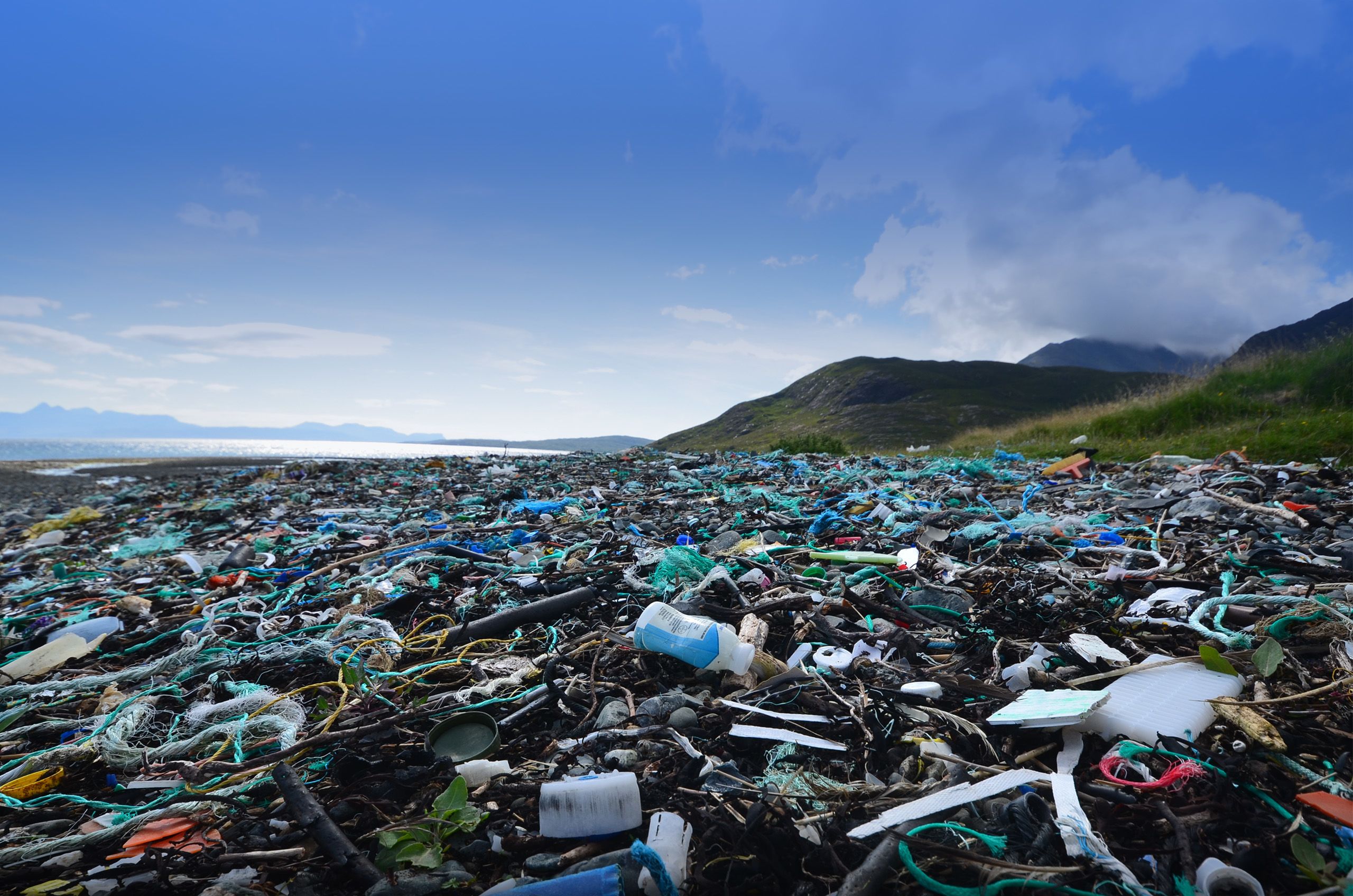
Inspired by an academic paper from 1972, a team of scientists travelled to the Isle of Skye to assess the oceans of litter found on its remote beaches and in its lochs.
Among the washed-up waste were thousands of shotgun shells, a Chinese fire extinguisher, a wheelie bin, plus invisible water hazards such as chemicals, fibres and microplastic pollution.
The University’s PR team joined them for a week of scientific study to tell the story of what they found.
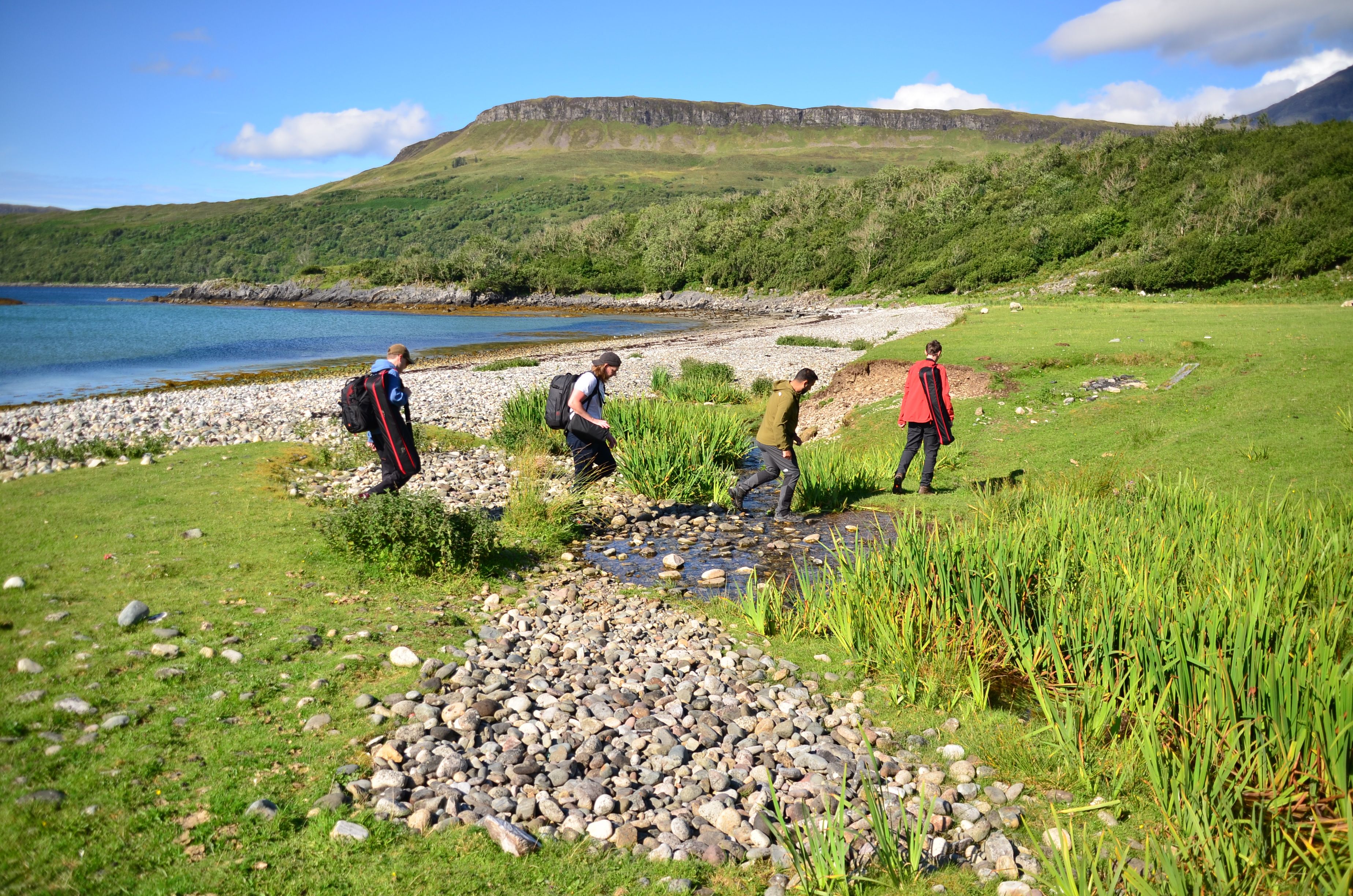
The University's PR team joined a team of scientists on the Isle of Skye.
The University's PR team joined a team of scientists on the Isle of Skye.
AN HOUR’S hike across the Elgol peninsula towards the Cuillin mountains on the Isle of Skye will bring you to Camasunary – a beach only accessible by foot or by sea – where the tideline is hardly visible, covered in every direction by layers of rubbish washed up by the sea.
The litter here has been counted at more than 1,000 pieces per square metre at some spots and saturates deep into the sandy earth, the result of decades of ocean dumping.
50 years ago, Professor Gerald Scott, of Aston University, studied two of the Island’s most remote beaches, around the headland from Camasunary (pictured above), and recorded the washed-up litter that covered what should have been idyllic coves.
Below is a table from Professor Scott’s 1972 paper, which catalogued beach rubbish found in Skye.
Table 1
Plastics packaging identified at two sites on Loch Scavaig.
|
Site A |
Site B |
Material of construction |
|
|---|---|---|---|
|
Detergent containers |
15 |
7 |
Polyethylene (L.D.) |
|
Bleach, sanitary fluid containers |
13 |
15 |
Polyethylene (H.D.) |
|
Oil containers |
3 |
4 |
Polyethylene (H.D.) |
|
Cosmetic containers |
13 |
3 |
Polyethylene (L.D. & H.D.) |
|
Aerosol caps |
1 |
1 |
A.B.S resin |
|
Buckets and washing up bowls |
7 |
2 |
Polyethylene (L.D.) |
|
Food containers |
- |
1 |
A.B.S resin |
|
Fertiliser sacks |
3 |
2 |
Polyethylene (L.D.) |
|
Thick gauge sheets |
- |
6 |
Polyethylene (L.D.) |
|
Thin gauge sheets |
2 |
- |
Polyethylene (L.D.) |
|
Ropes |
- |
6 |
Polypropylene |
|
Fishing nets |
- |
2 |
Polypropylene |
|
Miscellaneous unidentified |
6 |
3 |
Mainly polyethlene |
He wrote a paper, ‘Plastics packaging and coastal pollution’, in which he described the three main types of plastic waste found: domestic and industrial waste, agricultural packaging, and maritime waste.
His prophetic conclusion warned that the problem of plastic pollution will only grow as retailers increasingly used plastics to package their goods.
He also predicted that the introduction of new, durable synthetic materials would add to the ‘effluent’ building up on Skye’s coastline.
“If the usage of plastics in packaging increases at its present rate the annual production of plastic effluent will double by 1980.
“Moreover, the problem will become more acute for another reason, name that the newer types of plastic being introduced into the packaging industry (notably PVC) are inherently more resistant to environmental degradation than the ones already discussed.”
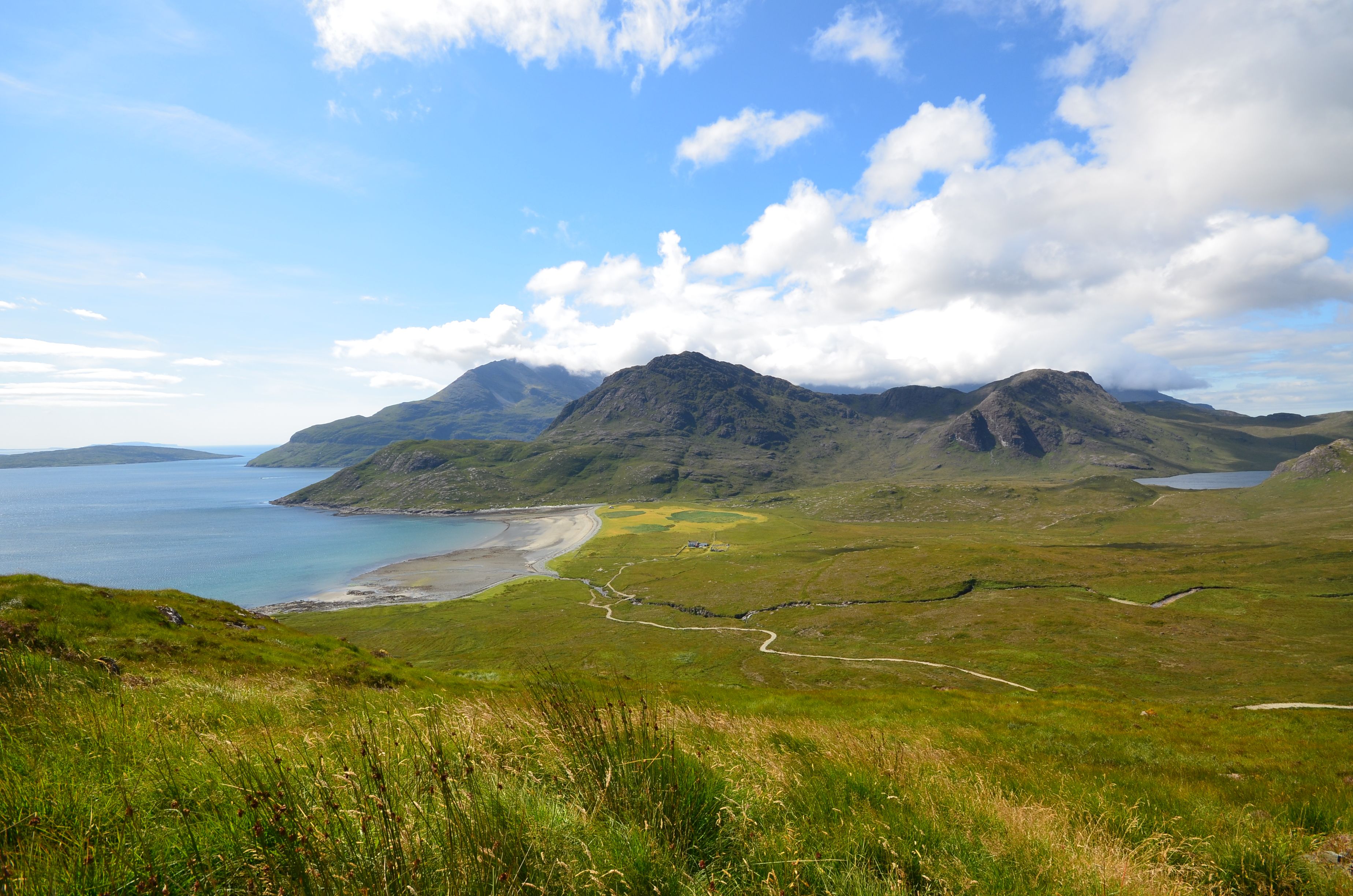
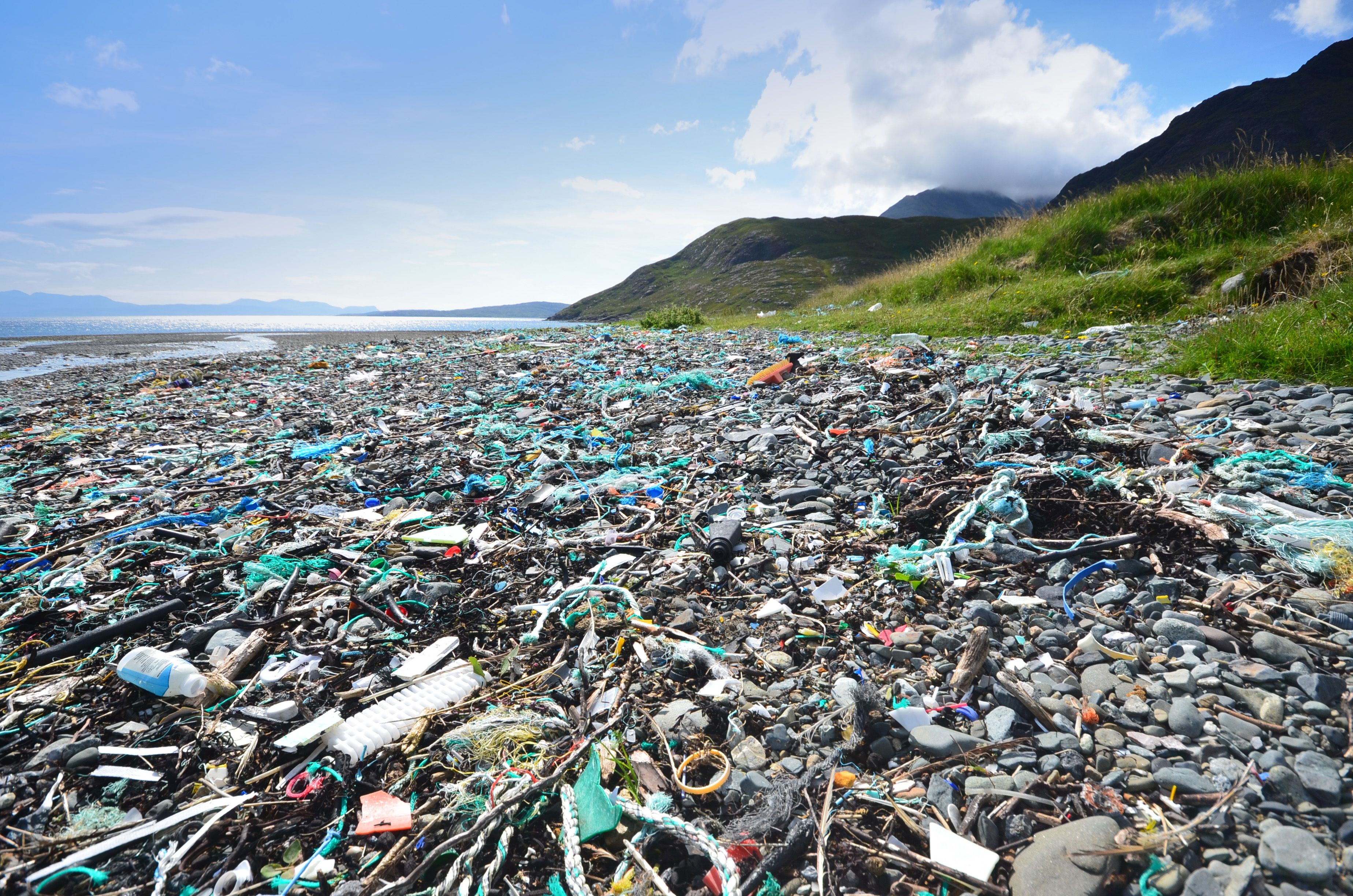
Earlier this year, captivated by the half-century-old article, Dr Tom Stanton, of Loughborough University, set about retracing Prof Scott’s steps to see how, or if, Skye’s beaches have changed.
In August, Dr Stanton and PhD researcher Melissa Schiele, along with a team of more than a dozen colleagues, visited the island for two weeks.
They surveyed beaches, flew drones (pictured below), sampled water, cleared litter, and interviewed people who live and work on Skye. Now back in Loughborough, the researchers will identify the types of litter they found to try to link them to their sources.
At the end of the year-long study, the team hopes to be able to improve beach litter survey techniques and share their findings with industry and legislative policymakers with the aim of improving coastal pollution levels.
Dr Stanton said: “I read Scott’s paper seven years ago, when I was a master’s student, and I thought how cool it would be to go back there and see how it's changed.
“Now, 50 years on, we got to use survey techniques that weren't available to Gerald Scott such as drones and really accurate GPS logging.
“We have also spoken to members of the community who have been on the island for enough time to give us a picture of how litter on the island might have changed.
“But Scott foreshadowed what we see now, if we don't do something about the litter there's going to be beaches around the coast of the UK that are inundated with litter.”
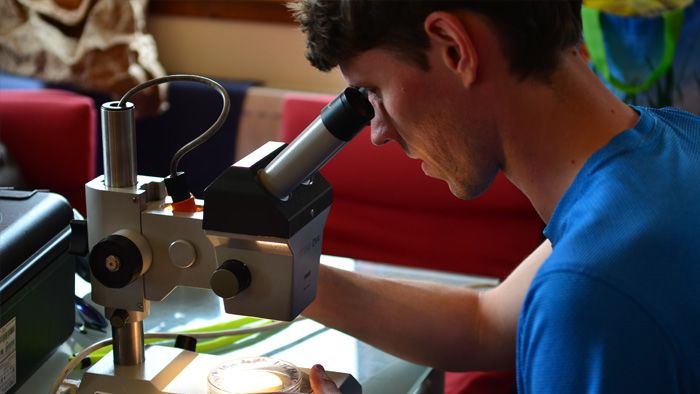
Dr Tom Stanton of Loughborough University
Dr Tom Stanton of Loughborough University
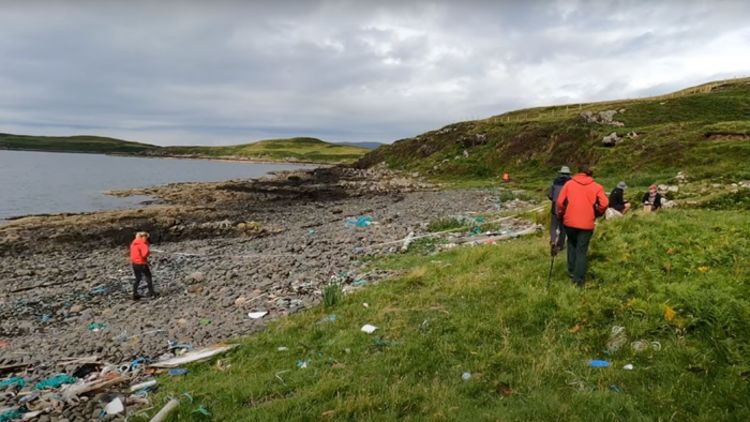
The team surveying a beach and cleaning litter.
The team surveying a beach and cleaning litter.
In total, Dr Stanton and the team visited nine places: Elgol, Camasunary, Dunvegan, Neist Point, Waternish, Ullinish, Torrin, Loch Ainort and Ostaig.
They cleared around two tons of rubbish from the beaches while they were in Skye, logging 13 909 pieces of litter.
The majority was made up of old synthetic rope and net cut free from fishing vessels, as well as countless plastic fishing implements – the same type as described by Prof Scott in 1972.
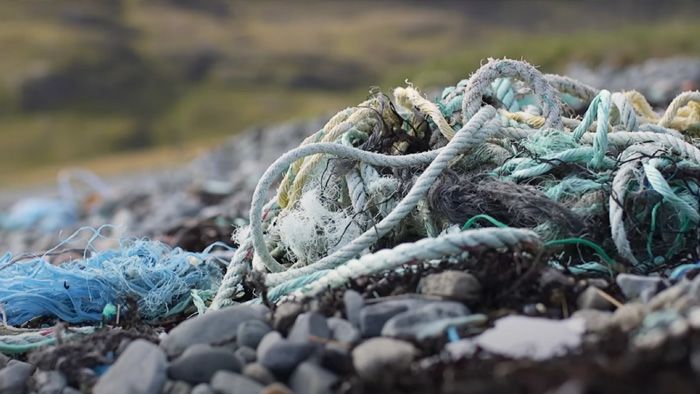
Old synthetic ropes and net from fishing vessels.
Old synthetic ropes and net from fishing vessels.
It is likely, said Dr Stanton, that these pieces all come from fishing boats that have either thrown unwanted equipment overboard or accidentally lost it to sea.
They also found several ‘exotic’ items such as a Chinese fire extinguisher (pictured below) and a wheelie bin which made its way from mainland Scotland to Skye via Loch Hourn.
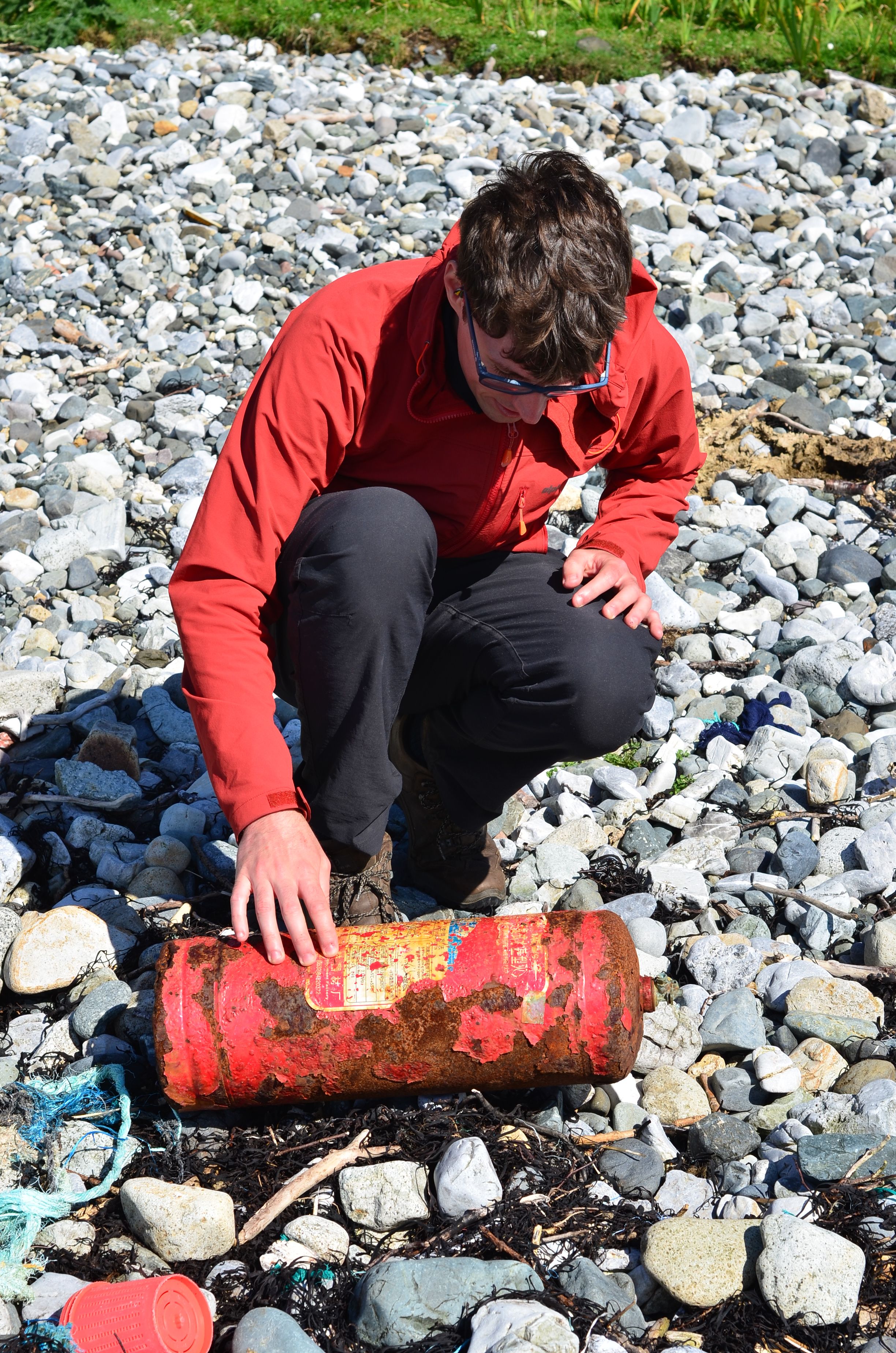
Dr Stanton finding an old Chinese fire extinguisher
Dr Stanton finding an old Chinese fire extinguisher
However, the most perplexing find was 10s – if not 100s – of thousands of spent shotgun cartridges which can be found in huge numbers on beaches all over the island. Their origin remains a mystery, although it has been suggested that they are from the coast of eastern Canada and the USA.
But Skye’s beaches cover almost the entirety of its coastline. Reaching them all is difficult.
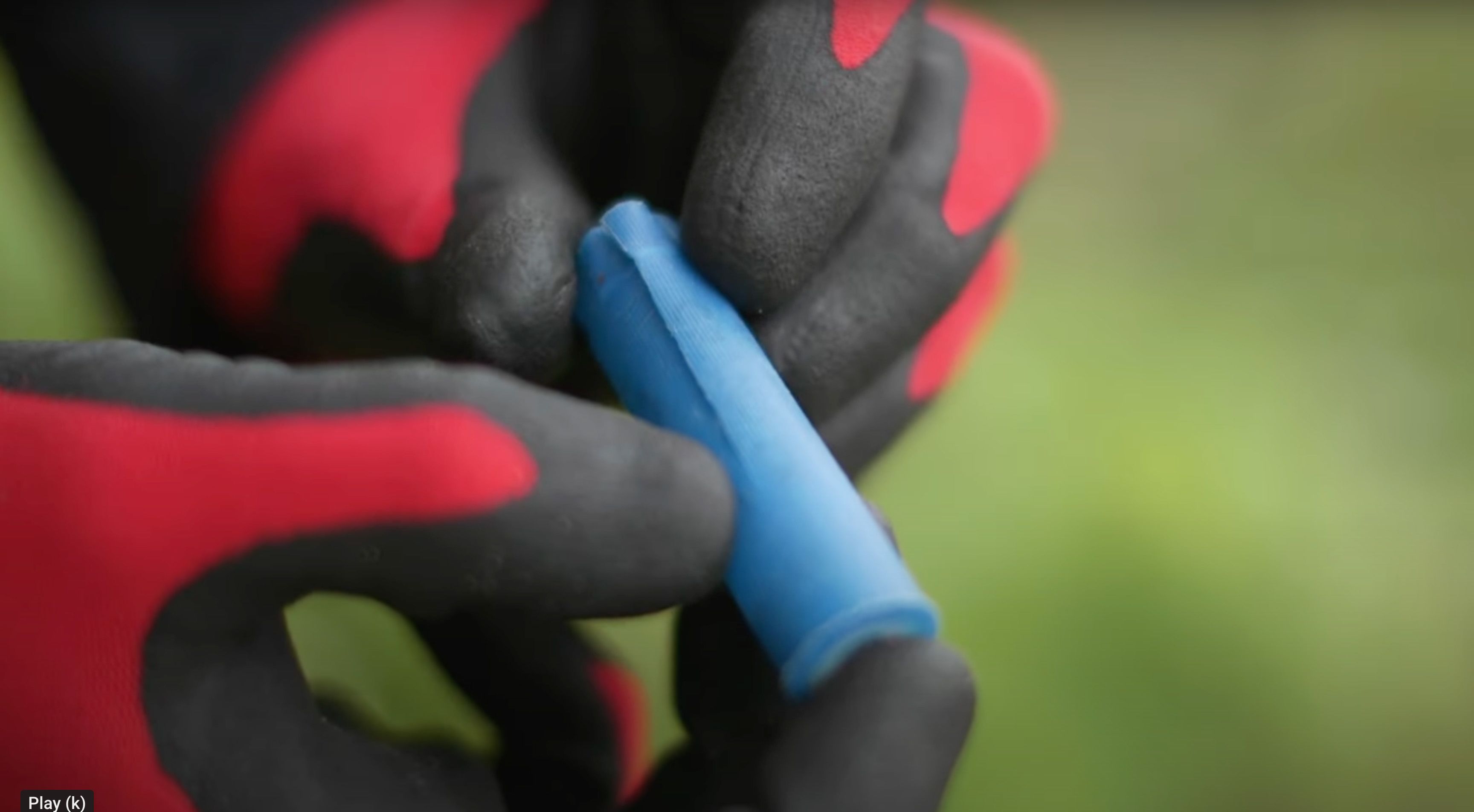
One of the many thousand spent shotgun cartridges washed up on Skye's beaches.
One of the many thousand spent shotgun cartridges washed up on Skye's beaches.
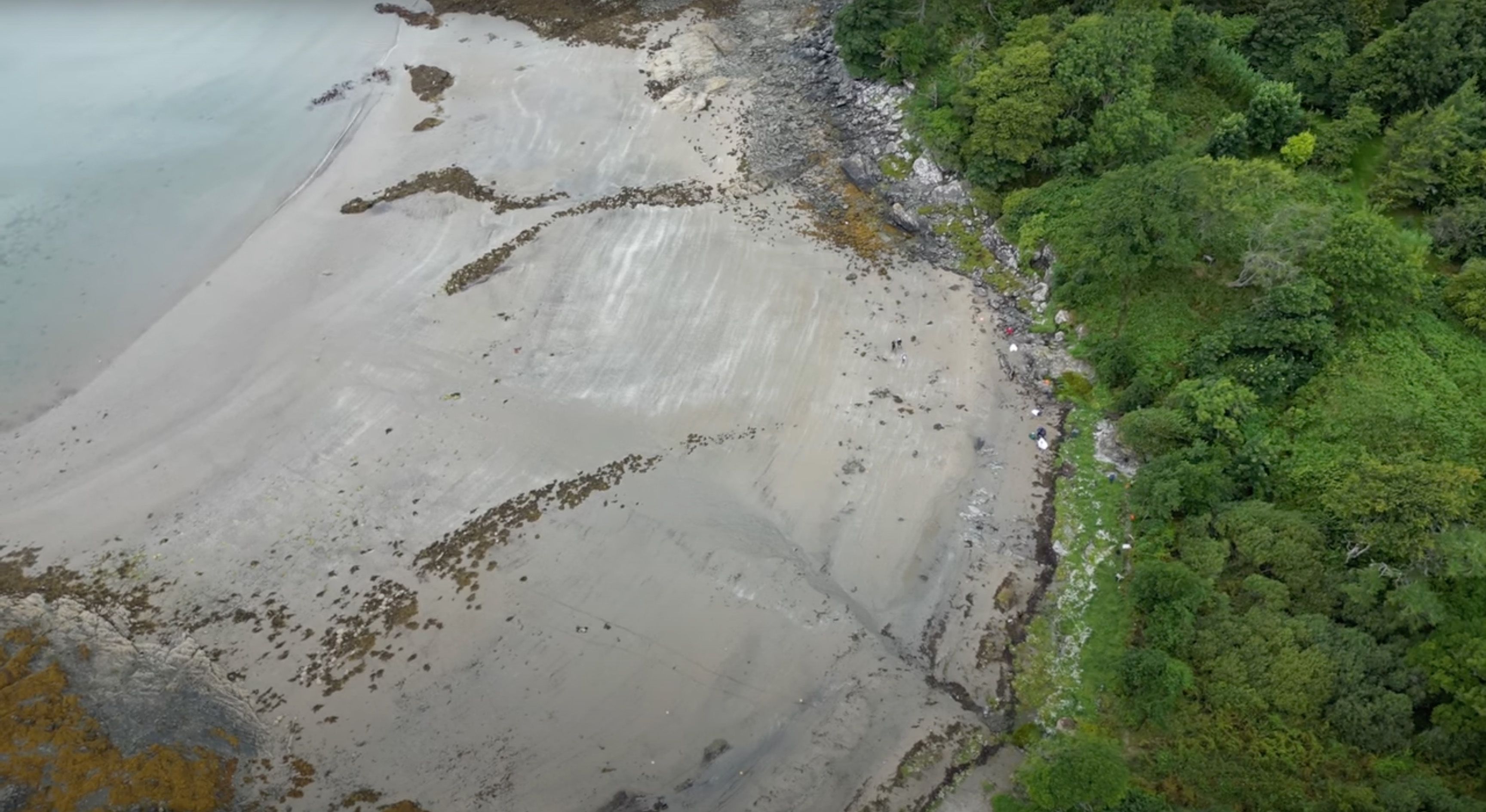
Drone technology
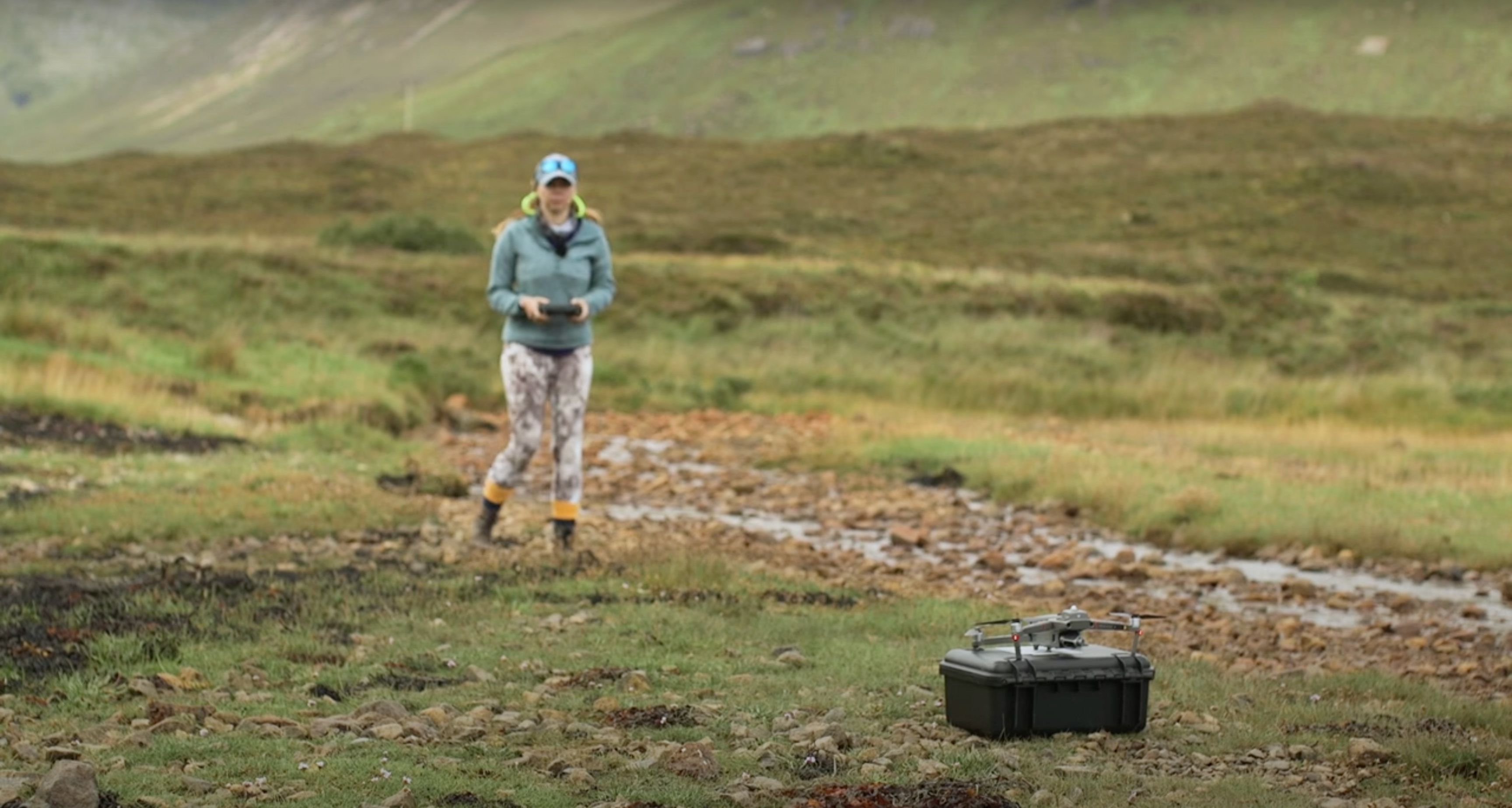
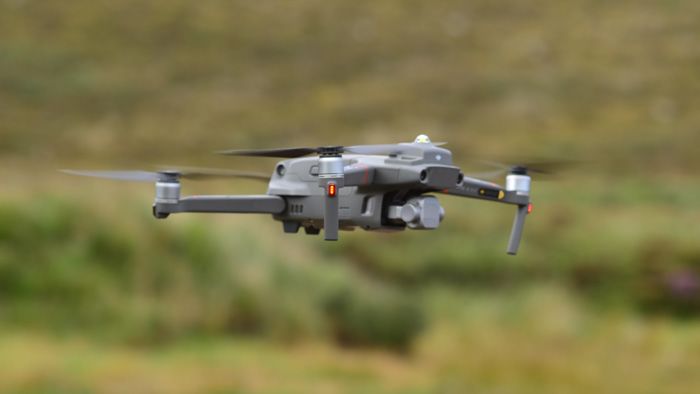
A drone used by the team to assess the beaches in Skye.
A drone used by the team to assess the beaches in Skye.
Tom’s research partner Melissa’s work revolves around using technology, in particular drones, to evaluate the pollution, especially in remote locations. Her research aims to give other people the tools to assess and strategically plan clean-up operations.
She said: “Lots of people already have drone systems and the methodologies that we're creating will hopefully be replicable by the residents, or anybody interested in doing beach surveying.
“Some of the beaches in Skye are pretty inaccessible and with drones you can fly to those parts and gather photographs or videos. Using the data we've gathered on other beaches – we can build up a picture of how much is there.
“We can estimate the amount of littler on a beach using litter aggregation rates but also, knowing the last time it was cleaned, is incredibly useful.
“That means we know how many people we need to send to clean that beach. So, in that way, drones can be incredibly helpful in the planning of beach cleans, especially in remote places.”
A big part of the project is centred on using local knowledge to identify the beaches that best represent the diversity of types and quantities of litter.
Teaming up with environmentalists and residents from the island, the researchers carried out community litter surveys and clean-ups at a number of locations.
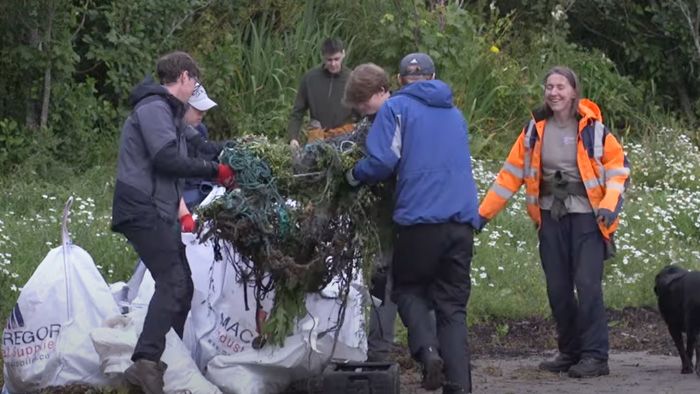
A community litter survey and clean-up.
A community litter survey and clean-up.
Like Melissa, some of the locals have incorporated technology into their beach cleaning strategies.
Emily Johns is a local volunteer with Skye Beach Cleans and welcomed the idea of using drones. She explained how she has utilized satellite images online to spot affected places on the island.
“I can definitely see that [technology] has got potential,” said Emily.
“There are lots of places on Skye that are completely inaccessible by land, or you've got to take a quad bike or access them by sea – we don't really know what litter is on those beaches, there could be huge bits we don't know anything about.
“At Torrin there’s a huge trawler net (pictured below) visible on OS maps and you can absolutely see it, it’s a pale blue line across the rocks which looks totally unnatural – that fact you can see it from satellite imagery is both terrifying and impressive.”
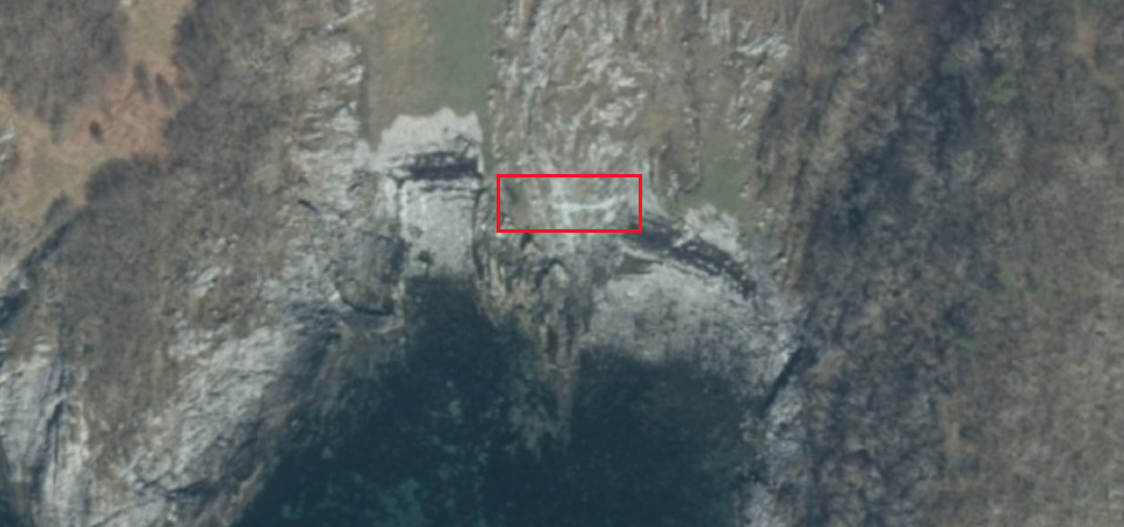
A fishing net at Torrin, Skye, as seen on OS maps.
A fishing net at Torrin, Skye, as seen on OS maps.
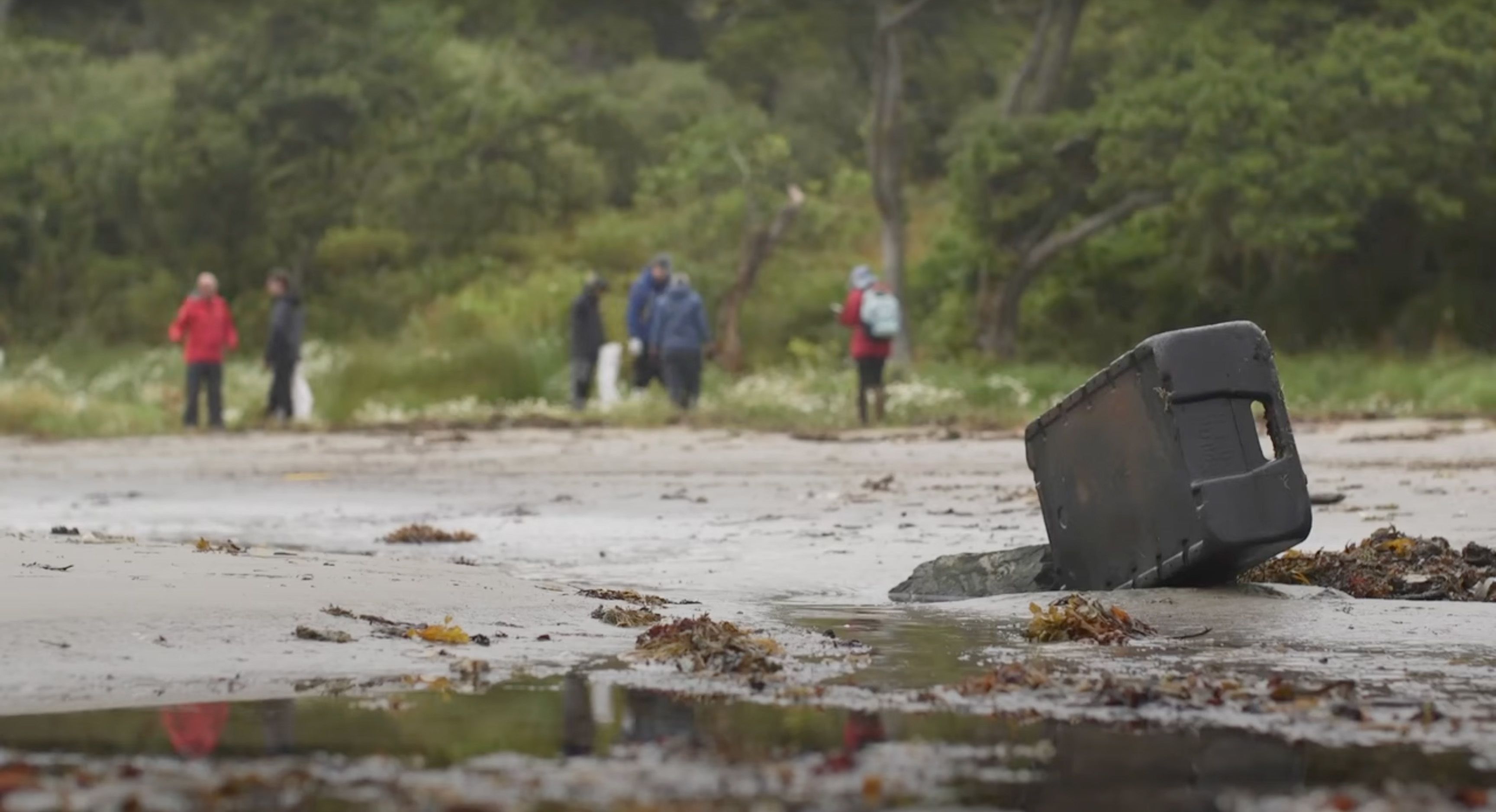
Kathryn MacRae, lead gardener at the Clan Donald Estate and Armadale Castle, said she had found everything from fishing tackle to bathtubs washed up on the beaches she oversees at Ostaig.
She added: “The impact is on wildlife, all this plastic waste that’s in the environment.
“And, as an area, we're also known very much for the beauty of the land and the sea, and in that regard, one of the most beautiful places I've ever been to – Camasunary (pictured below) - you walk onto the beach and it's shocking.
“The level of waste that has ended up in this place because of the tides and it's not being washed back out again."
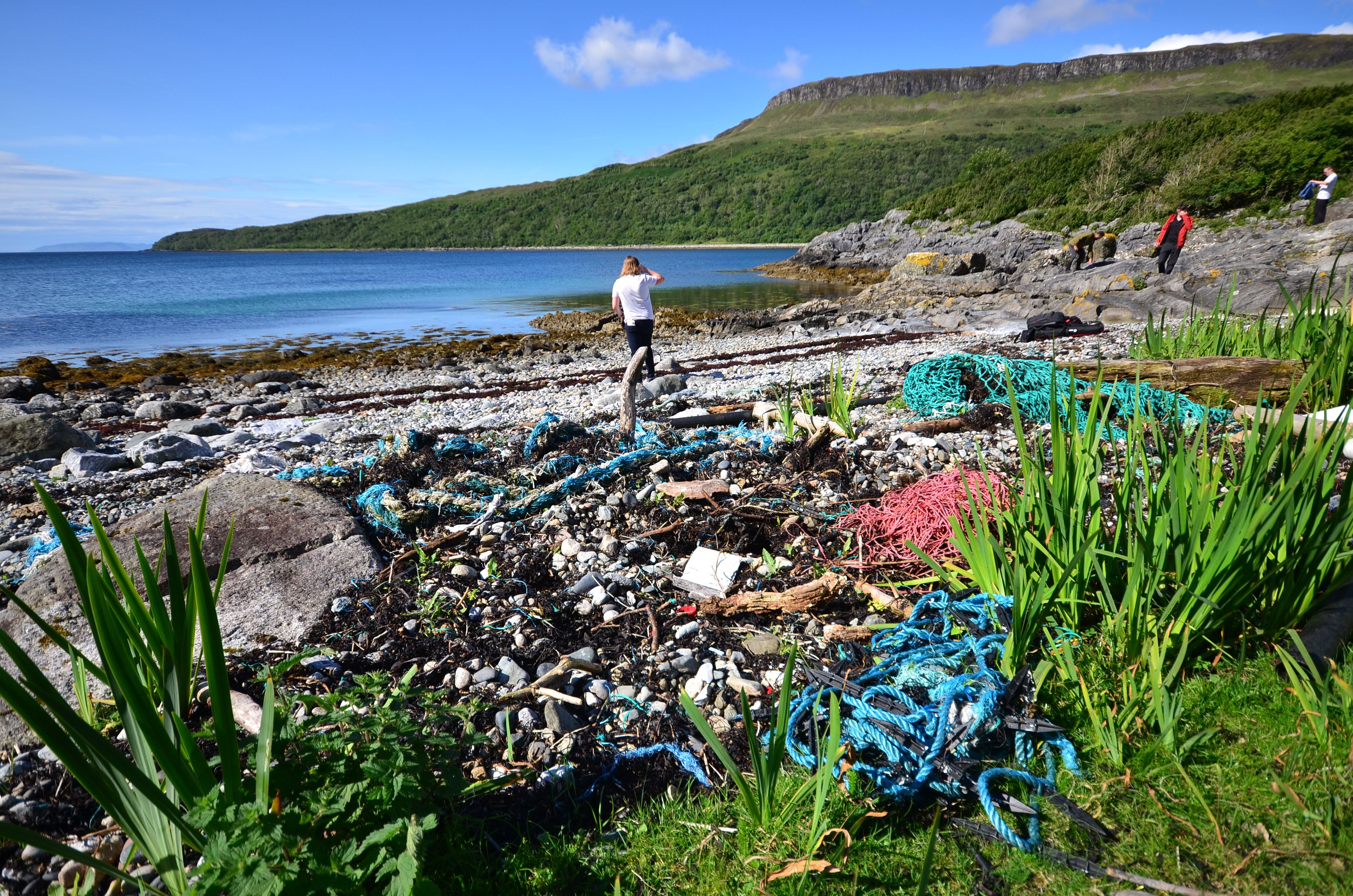
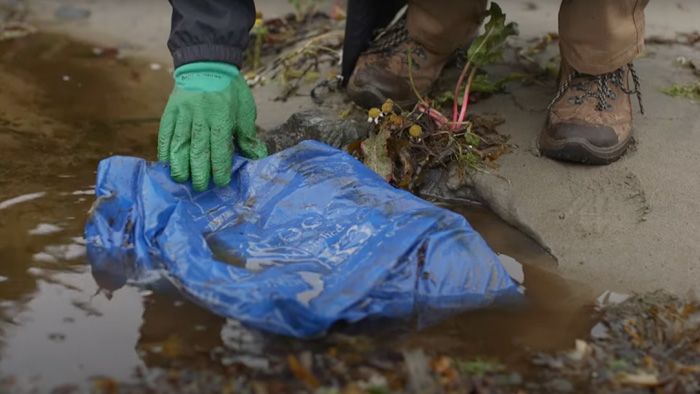
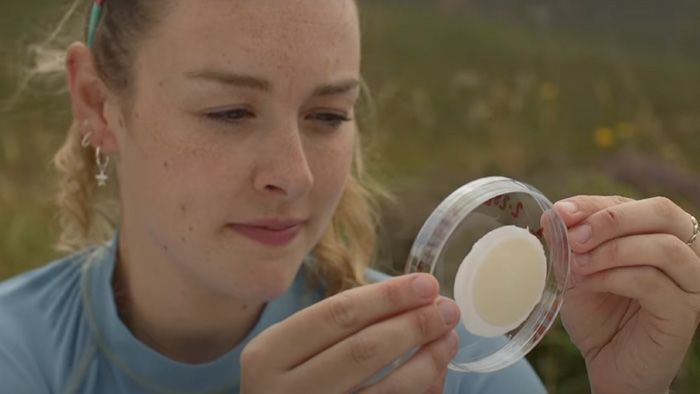
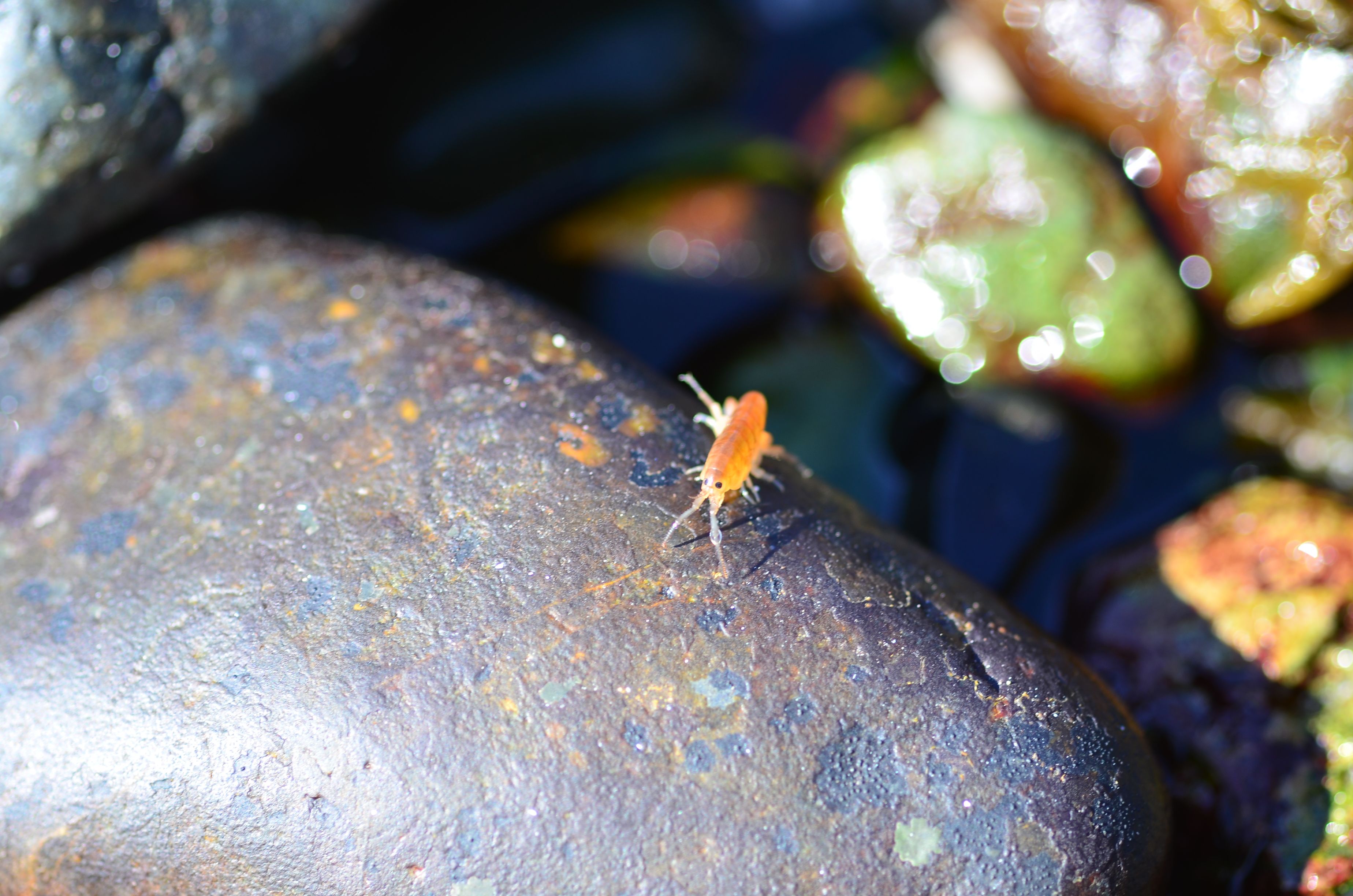
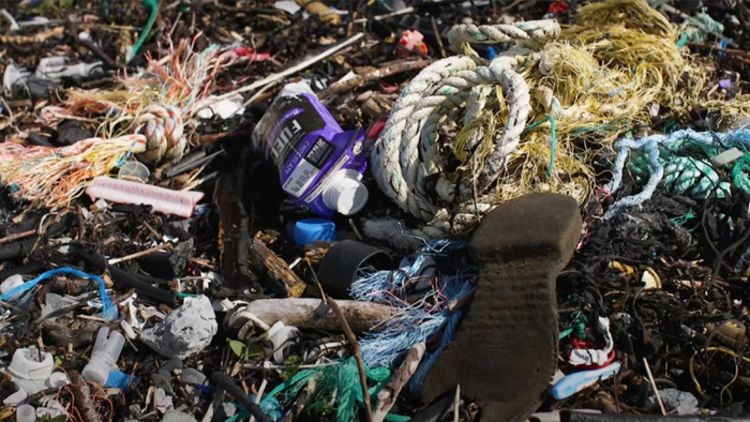
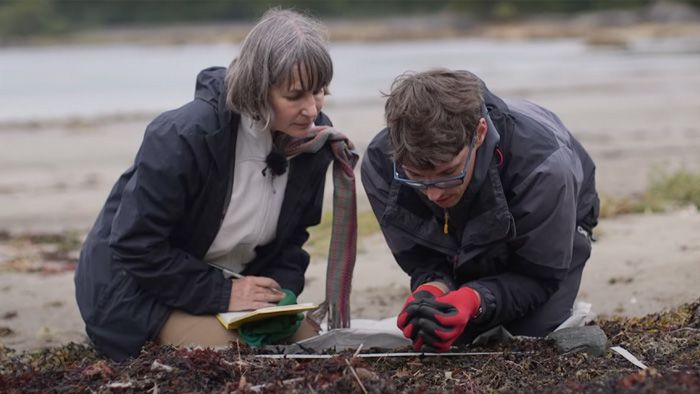
Professor Deidre McKay (left) plans to compile an oral history of the island's beach cleaning past.
Professor Deidre McKay (left) plans to compile an oral history of the island's beach cleaning past.
The long-term plan for Tom and the team is to refine litter survey methods with Skye residents to aid their efforts to fight the seemingly impossible challenge of cleaning up the relentless flow of rubbish plaguing their beaches and lochs.
Team member Professor Deidre McKay, of Keele University, spent the fortnight interviewing Skye residents – many of whom remember the days of Prof Scott and were actively scouring beaches for litter in the 1970s. She plans to compile an oral history of the island’s beach cleaning past.
She said: “Local people are the ones most impacted by this problem. They live with this waste day in and day out.
“Some of it is the by-product of work at sea or being lost at sea, other parts of it people describe as ‘highway rubbish’ and it's just waste that's getting into the ocean and being carried out there by currents and deposited on beaches.
“It's going to have an impact on the inshore fisheries, it's going to have an impact on the wider ecosystem – and eventually on the food sources that people and wildlife here depend on.”
The next stage in the project is to share the findings with industry and legislative policymakers with a view to updating the environmental laws which govern the upkeep of British coastlines.
The team also plans to develop the project using its links with the Skye community to identify new areas of research on the island.
The project was funded by the Sea-Changers Innovation Fund.
Watch the film
Loughborough’s PR team spent a week in the Isle of Skye with Dr Stanton and his team documenting their work. Here is a short film about the project.